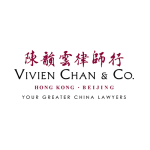While foreign language marks have been increasingly recognised in the Chinese market, local consumers will still likely use Chinese language marks to refer to foreign brands. Therefore, devising suitable Chinese language marks and securing registration for the same shall always be a priority for players in the Chinese market.
This article explains the importance of registering Chinese language marks, ways to devise your Chinese language marks, and tips on obtaining registration and maintaining the same.
Why register Chinese language marks?
The importance of registering Chinese language marks is manifested in three main ways.
Marketing convenience
Localisation of foreign brand names is necessary. The official language of China is Chinese with the official dialect being Putonghua/Mandarin. The consumers in China, being Chinese-speaking consumers, will inevitably use Chinese to refer to foreign brands, as Chinese brand names remain easier to remember and pronounce. The use of Chinese language marks can save brand owners' time and money in getting their brands recognised in China. Thus, even if only foreign language marks are attached to the products, Chinese language marks are still needed for marketing purposes.
|
|
“The Chinese language mark should be easy to remember and pronounce, and with good connotation. Ideally, the mark should consist of two to four Chinese characters.” |
|
|
Furthermore, when a foreign brand owner enters the Chinese market, local distributors, retailers, media and consumers will tend to devise their own Chinese versions of the brand should there be no official Chinese name. Dilution of the brand may be caused if different versions of Chinese names are devised, thus undermining marketing efforts dedicated to the brand.
There is also no guarantee that the Chinese names devised will be to the liking of the brand owner, align with brand image or carry positive connotations. Worse still, once such Chinese names are associated with the brand, it may be difficult to change afterwards. By devising suitable official Chinese language marks at the early stage, brand owners can retain control over their Chinese brand names and avoid undesired names being used to refer to their brands.
Stamping out squatters
China adopts a first-to-file system. If brand owners do not register their desired Chinese brand names quick enough, brand owners may encounter difficulties in securing registration for the desired marks at a later stage.
In China, it is commonplace for squatters to make pre-emptive trademark filings for the Chinese counterparts of foreign brands, including those commonly used by the Chinese public to refer to the brands. Such bad faith registrations will not only disrupt the business of brand owners, but will also block brand owners' applications for the Chinese marks they desire. The longer the delay in registering the Chinese marks desired, the fewer the choices will be available and the more obstacles the brand owners will encounter.
Key tool in seeking redress against infringers
Seeking redress by the brand owners for infringement of their unregistered Chinese language marks by relying on registrations of foreign language marks is often difficult as the brand owners will have the burden to prove a stable and unique corresponding relationship between the Chinese language marks and the foreign language marks in absence of proper registrations.
Furthermore, in practice, local trade and social media platforms are often reluctant to take down advertisements and product listings using the brand owner's Chinese language marks unless the brand owner is able to provide the registration certificates of such marks in China.
Promptly devising Chinese language marks and securing registration for the same are therefore essential in acing the Chinese market.
How to devise a Chinese language mark
The Chinese language mark should be easy to remember and pronounce, and with good connotation. Ideally, the mark should consist of two to four Chinese characters.
Understanding the Chinese language
Chinese characters are featured by logogram. Each and every character has meanings, and they are not simply an indication of sound-like alphabets. For example, '日' (pronounced as 'ri') means 'sun' and 'day'; '月' (pronounced as 'yue') means 'moon' and 'month'; while '明' (the combination, pronounced as 'ming') means 'clear', 'bright' and 'to understand'. Therefore, even for transliteration, each character will still have its individual meaning.
Furthermore, there are many homophones in the Chinese language. For example, the Chinese characters '一' (meaning 'one'), '衣' (meaning 'clothing'), '医' (meaning 'doctor', 'medical') all pronounce as 'yi'. Care must therefore be taken to choose the Chinese characters that complement the brand identity and have a good connotation.
It is therefore worthwhile to spend resources in devising the appropriate Chinese character marks that could fit in your brand image and positioning. As an introduction, some of the usual ways in devising the Chinese character mark as your starting guide are outlined below.
Five methods for devising the Chinese character mark
Literal translation
Brand owners can adopt the direct Chinese meaning of the foreign-language mark if the mark as a whole has a Chinese-equivalent dictionary meaning. For example, '苹果' for Apple and '花花公子' for Playboy, or if each character of the mark has a Chinese-equivalent dictionary meaning, for example, '微软' for Microsoft (with '微' meaning 'micro' and '软' meaning 'soft') and '蓝妹' for Blue Girl (with '蓝' meaning 'blue' and '妹' meaning 'girl').
Liberal translation
Sometimes the foreign language mark does have a dictionary meaning in Chinese, but its direct Chinese translation is not desirable. In such a situation, brand owners can retouch the translation for the Chinese language mark to sound elegant and pleasant to the Chinese consumers.
For example, the name of the restaurant 'Toast Box' can be directly translated into '土司盒子', but the owner has instead adopted '土司工坊' (meaning 'Toast Workshop') which is more compatible with the Chinese language. Another example is '美国运通' adopted by American Express, with the characters '运通' not being a direct translation of the word 'Express' but bears further positive meanings of success and prosperity.
Transliteration
Transliteration, i.e. direct soundalike can be adopted when the foreign language mark is a coined word without dictionary meaning. Some examples of transliteration of foreign marks into Chinese include '迪奥' (pronounced as 'di-ao') for Dior, '玛莎拉蒂' (pronounced as 'ma-sa-la-di') for Maserati and '万宝路' (pronounced as 'wan-bao-lu') for Malboro.
Combination of transliteration and translation
Brand owners can also embellish the transliteration by infusing words with good connotations into the Chinese brand name such that the Chinese name would sound phonetically like its foreign counterpart, match with the brand's image and sound pleasant to the Chinese consumers.
|
|
“the Chinese brand name of Coca-Cola ‘可口可乐’ (pronounced as ‘ke-kou-ke-le’) sounds like its foreign counterpart and carries the meanings of ‘delicious’ and ‘happiness’” |
|
|
For example, the Chinese brand name of Coca-Cola '可口可乐' (pronounced as 'ke-kou-ke-le') sounds like its foreign counterpart and carries the meanings of 'delicious' and 'happiness', and the Chinese brand name of IKEA '宜家' (pronounced as 'yi-jia') sounds like 'IKEA' and means 'suitable for home'.
Creative translation
Alternatively, brand owners can adopt Chinese brand names that bear some but limited resemblance to the foreign language counterpart, such as abbreviations and highly modified transliterations which bear connotations that accord with the brand image. '玉泉' (pronounced as 'yu-quan') meaning 'jade spring' for Schweppes, '露华浓' (pronounced as 'lu-hua-nong') adopted from a famous Chinese poem for Revlon are some good examples.
How to secure protection and maintain Chinese language marks
Register all versions of the Chinese character mark
Brand owners may adopt different official Chinese names for different regions in the Greater China area. For example, Mercedes Benz is known as '奔驰' (pronounced as 'ben-chi') in mainland China, as '平治' (pronounced as 'ping-zhi') in Hong Kong SAR and as '宾士' (pronounced as 'ben-shi') in Taiwan. Such variations create opportunities for squatters to develop and register variations of the Chinese character marks actually adopted by the brand owner in mainland China.
Apart from the official Chinese names adopted by the brand owners, squatters will often also register the unofficial names used by the local public to refer to the brands or the brands' products. This problem may be mitigated in case the brand owners announce and use its official Chinese names right from the start. Still, monitoring the market, and defensive filings of your Chinese language mark in multiple versions, either official and unofficial, and covering names with identical and/or highly similar pronunciation are something that the brand owners shall have in mind.
Register the Chinese language mark free of other elements
It is common that brand owners will use their Chinese brand names along with other elements, including their foreign language brand name and brand logo as a composite mark. However, under the local practice in China, each element of a composite mark, for example, the Chinese characters, English characters, numerical part and the device is to be examined on its own. Should any of the element of a composite mark be considered similar to a prior mark or any of its elements, a citation objection will be raised.
As such, it is advisable to register the Chinese brand name and each other elements separately to avoid situations where the whole application for the composite mark is blocked by citation faced by one of the elements.
The anticipated challenges: ways to secure the registration
Pre-filing searches are effective in identifying potential obstacles, and particularly effective in case the marketing campaign has not yet started and therefore the proposed Chinese language mark may still be changed based on the potential obstacles revealed. The following actions may also be taken to remove potential obstacles revealed:
Non-use cancellation
This is generally the cheapest way to clear blocking prior marks. A mark will be vulnerable to cancellation due to non-use three years after registration. For the non-use cancellation in mainland China, the burden is on the registrant to show use, and the applicant is not required to conduct any preliminary search and/or investigation prior to the commencement of the proceedings.
Invalidation and opposition
Brand owners may also explore opposing or invalidating the prior application or registration, particularly based on the ground of bad faith if the applicant or registrant is a trademark squatter.
Letter of consent
A letter of consent may also be an option, but the brand owner shall be aware of the fact that a letter of consent in the prosecution practice in mainland China is not absolute, meaning that the authority (i.e. China National Intellectual Property Administration) will have the discretion to accept or reject a letter of consent in removing citation.
Under the current examination practice, a letter of consent will not be accepted for identical marks. Also, the letter of consent has to be notarised and legalised or else the same will not be considered at all.
Assignments and acquisitions
Alternatively, brand owners may also approach the prior mark owner for purchase of the desired Chinese mark. Depending on the circumstances, it may be advisable to approach the prior mark owner anonymously or leverage on actions against the prior mark to urge the prior mark owner to comply with a request.
How to effect payment and the procedures in completing the assignment upon reaching a consensus will also be issues that the brand owners should take note of in effecting assignment. The same will vary depending on the circumstances and detailed advice should be sought in this regard.
Use and control
Last but not least, obtaining registration for the desired versions of the Chinese character marks will just be the starting point. It is equally important for the brand owners to kick start the use of the official and registered versions of the Chinese character marks in the official website, in the marketing campaign, in the shopfront and even on the product (if applicable). This will begin to educate the public of the official Chinese name and try to minimise the risk for the public to devise and/or use some other versions for which the brand owners may have no protection.
Brand owners shall also be aware of placing appropriate controls on all its distributors, licensees, retailers and alike, that they shall use and only use the official and registered versions of the Chinese character marks. This will not only enhance the public awareness of the official Chinese name, but will also mitigate risk of facing infringement claim should there be squatters registering other unofficial versions of the Chinese character marks of your brands.
This article should serve as a starting point to enhance awareness and provide tips in getting Chinese character marks protected in the Chinese market. As there is a first-to-file regime in mainland China, acting first and acting fast will always be the key.
Click here to read all the chapters from MIP's China Special Focus

Vivien Chan
Founding and senior partner
Vivien Chan & Co
T: +852 2522 9183
Vivien Chan is the founding and senior partner of Vivien Chan & Co. She has over 40 years of experience in mergers and acquisitions (M&A), information technology, IP and related tax issues.
Vivien is a justice of the peace and a past president of the Inter-Pacific Bar Association. She is a notary public, a notarial attesting officer in China, and an arbitrator at the China International Economic and Trade Arbitration Commission, Shanghai International Arbitration Center and the Shenzhen Arbitration Commission. She was awarded the Lifetime Achievement Award in 2017 by the American Chamber of Commerce in Hong Kong SAR and has also been awarded the Bronze Bauhinia Star and Silver Bauhinia Star by the Hong Kong SAR government for her outstanding contributions to Hong Kong SAR.
Vivien received her law degree from King's College London, and is admitted as a solicitor in England and Wales, Hong Kong SAR, Australia and Singapore.

Ann Xu
Head of Beijing Office
Vivien Chan & Co
T: +852 2522 9183
Ann Xu is a trademark attorney and heads the Beijing office at Vivien Chan & Co. She has more than 20 years' experience in IP cases in mainland China.
Ann has trademark, copyright and designs expertise. She regularly advises on prosecution and portfolio management.













